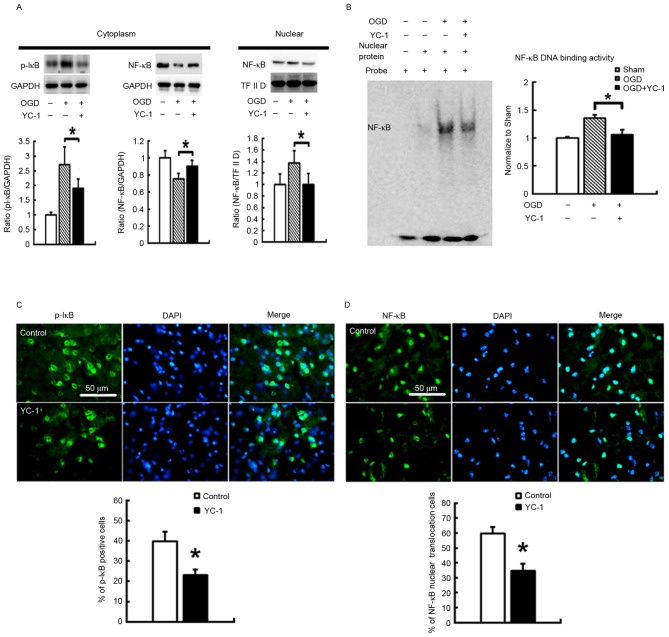Figure 1.
YC-1 decreases NF-κB binding activity and translocation in vitro and in vivo. Primary cortical neuronal cultures were exposed to OGD. (A) Representative western blot images and quantification demonstrating that 30 µM YC-1 treatment decreased the phosphorylation of the NF-κB inhibitory protein p-IκB, and inhibited NF-κB translocation from the cytoplasm to nucleus. GAPDH and TF II D served as internal controls for p-IκB and NF-κB, respectively. (B) YC-1 significantly reduced the increased NF-κB binding activity. In the ischemic brain, 25 mg/kg YC-1 significantly reduced the density of (C) pI-κB and (D) NF-κB translocation, as assessed by immunofluorescence. Data are expressed as the mean ± standard deviation (n=5/group). *P<0.05 vs. control. YC-1, 3-(5-hydroxymethyl-2-furyl)-1-benzyl-indazole; OGD, oxygen and glucose deprivation; NF-κB, nuclear factor-κB; TF II D, transcription factor II D.

